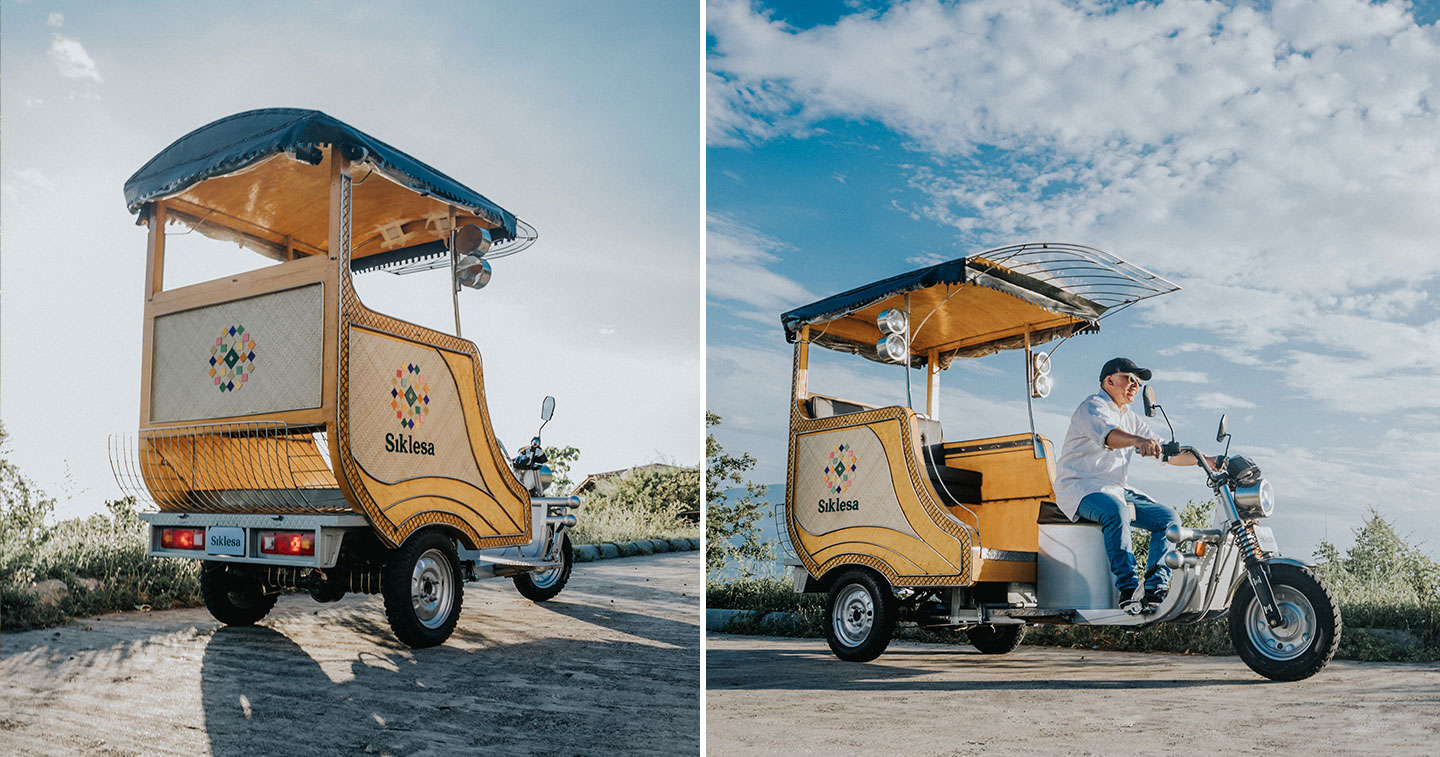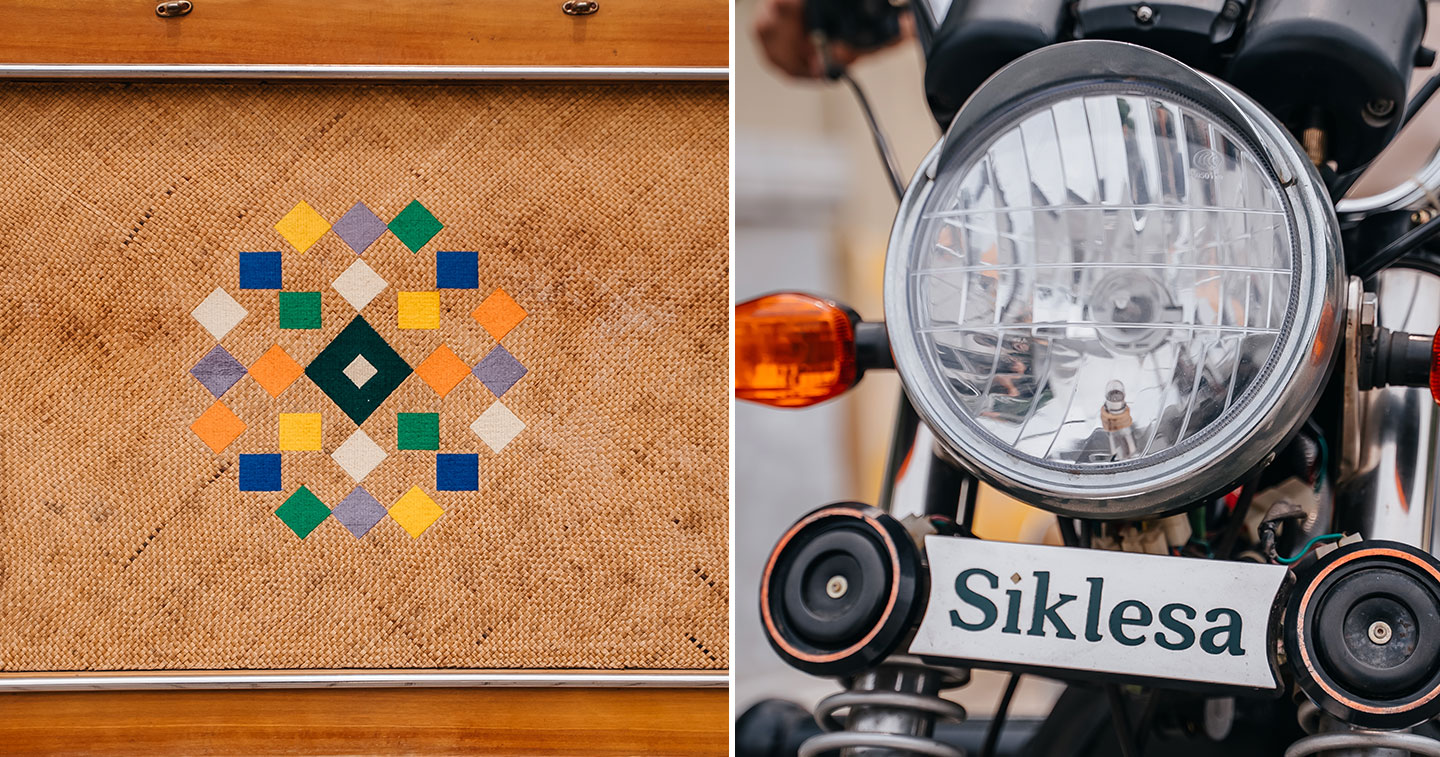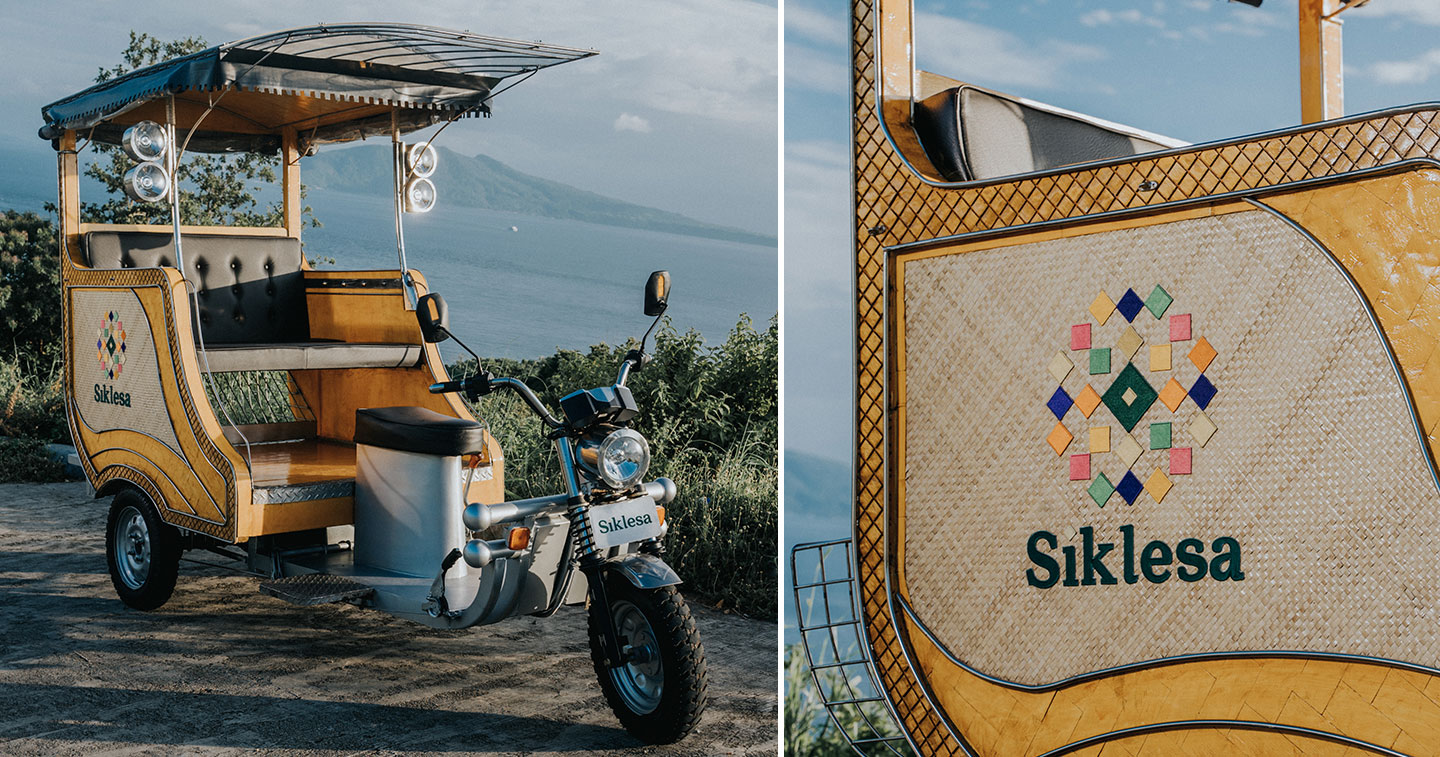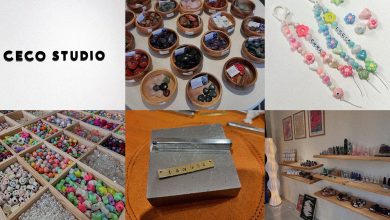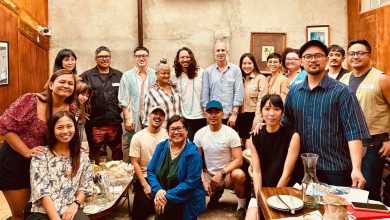MANILA, PHILIPPINES — When it comes to Filipino heritage, only a few vehicles are as iconic as the kalesa. Although this vividly painted horse-drawn carriage was widely used during the 18th century by Spanish officials and noble families, the kalesa has lost its practicality in recent years.
Enter young entrepreneur Lorenzo Vega, who wanted to combine elements from the past and the present to create a new benchmark of what is possible in Philippine transport innovation. In his desire to transform and use the best of the country’s heritage to respond to consumers’ new expectations and requirements, he created the Siklesa, a reimagined kalesa with a modern and efficient three-wheeled motorcycle. Launched at the 2018 Manila FAME, the invention won the prestigious Katha Award, signifying that it is a hallmark of Philippine product design excellence and innovation.
In this exclusive interview, adobo Magazine sits down with Lorenzo to talk about the process of creating the Siklesa, the visual design elements, and how this three-wheeled vehicle can be revolutionary for Philippine travel.
adobo: Tell us about the Siklesa. What is it and what kind of experience does it offer?
Lorenzo: The Siklesa is the past, present, and future of Philippine transportation. At its core, it is a reimagination and redesign of the classic kalesa, but now using modern transport technology both electric and gas-wise.
We see it as the future of transportation, especially in the context of the innovation of Philippine vehicles and tourism. It’s rare to see something that you have truly never witnessed before, and we can say with confidence that the Siklesa is one of those products. The experience, as a vehicle and beyond the aesthetics, is one-of-a-kind. It has been carefully designed to make the experience of traveling a pleasure. For example, there’s the 360-degree panoramic view, taller headroom to account for comfort for taller tourists, and higher overall flooring relative to the roads to help create that regal feeling. We wanted to make transport not just transactional from point A to point B, but something of a pleasure.
In essence, we created the quintessential Philippine vehicle.
Where did the idea come from?
The basic idea of Siklesa actually came from my grandmother, Carmencita Ongsiako Reyes, who I was very close with. We used to go on weekly trips around the city, and on one such trip, she actually showed me a picture of a very crude original design for a “kalesa without a horse” that she wanted to use in Marinduque because she was governor at the time.
As soon as I saw it, I felt the enormous potential it had, especially culturally and for tourism. I spoke to her and asked if I could run with the idea. From there, I enlisted the help of some incredibly talented collaborators, most notably Architect Jaime Recto, who is responsible for the amazing design.
It took us around two years to create the first prototype, which we debuted in Manila FAME. The branding was in collaboration with designer Ivy Pangilinan, along with our own in-house team. And of course, we worked and continue to work with talented builders and artisans to build the Siklesas.
To this day, in honor of my grandmother, her name is still on the patent.

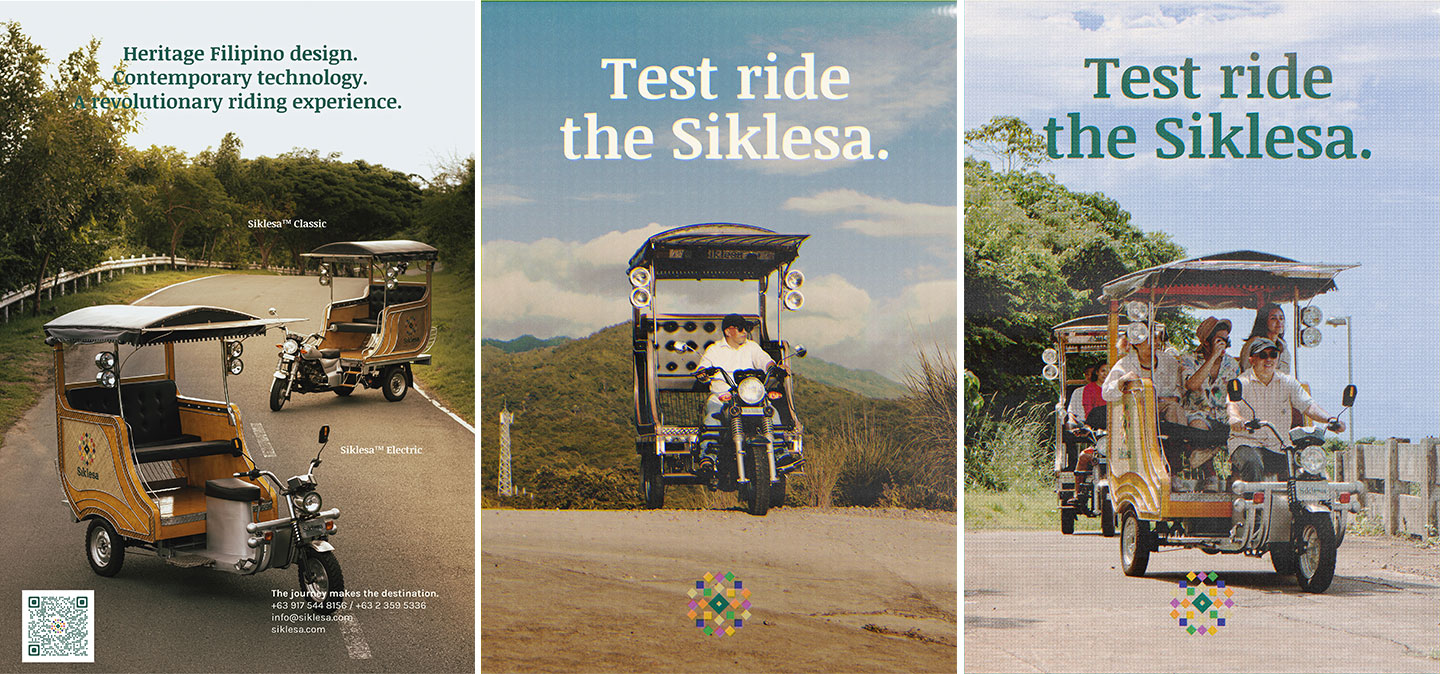
Speaking of talented builders and artisans, how does the Siklesa showcase Filipino workmanship and creativity?
The upper portion of the first Siklesa we ever produced was actually built by a kalesa artisan that already, in itself, shows Filipino workmanship. I also worked hand-in-hand with our designer, Architect Jaime Recto, who studied under Buensalido.
We have the modernized kalesa shape, partnered with up-to-date technology that fuses the past and present. Two years before we debuted the Siklesa at Manila FAME, we built and put all the pieces together here in the Philippines. For me, that shoes Filipino craftsmanship.
That’s one of the things we want to nurture because as a country, we tend to franchise. We love to bring stuff in that at times, we become too dependent on others for our innovations. But I really believe that the way to lift and push the Philippines forward is through great design, and that doesn’t just mean how something looks, but also how it works.
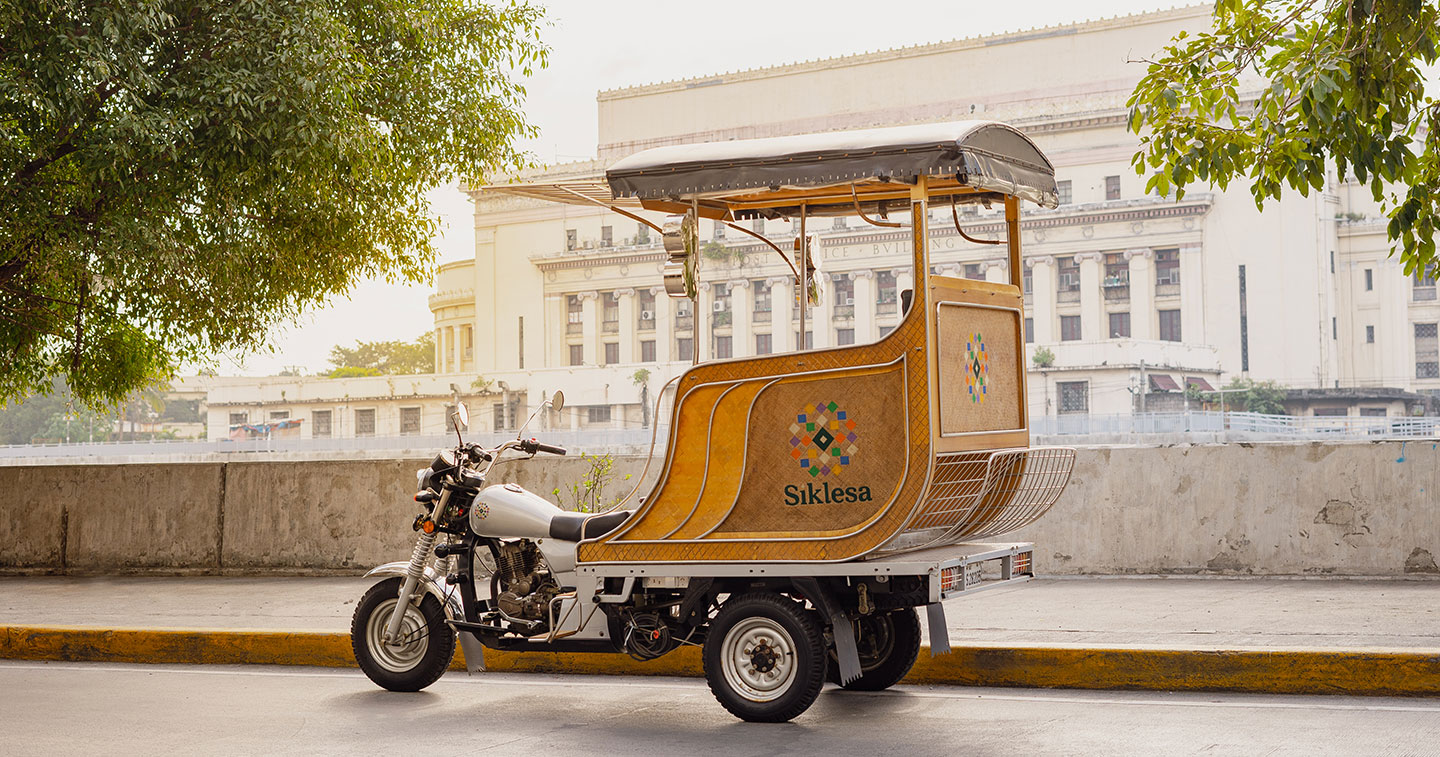
It’s the intersection of form and function. With this said, what was the process of building the Siklesa like?
Architect Jaime and I used photos from my grandmother as a starting point. In creating the Siklesa, we began with the silhouette, the shape, and all the mechanical aspects of it. The process was very arduous. Since it hadn’t been done before, we didn’t have references other than old kalesa photos.
Some of the early conceptual drawings that were made, even 3D renders, were way different than what they are now. The initial design was angular with sharp edges and corners. It was almost cyberpunk with all the purple and green colors. As we went along the process, we realized that it was best to allow the Siklesa to be simple and refined. So from all the angular designs and crazy colors, we arrived at a very simple color palette with neutrals and beiges. To make the design more elegant, we accentuated it with stainless steel which adds a certain sense of luxury.
When the branding came in, we wanted to keep well-known aspects of Filipino culture like the bright colors on the murals of the jeepney. That’s why the logo is colorful, even if it’s not the usual red, blue, and yellow. Now at the center point of the Siklesa’s facade, there is a traditional handwoven mat where the logo is embroidered. Our primary visual design inspiration for this is the banig, something that regions and provinces all across the country have their own variations of. By incorporating the banig pattern with tropical hues, the Siklesa brand also radiates a more local feel.


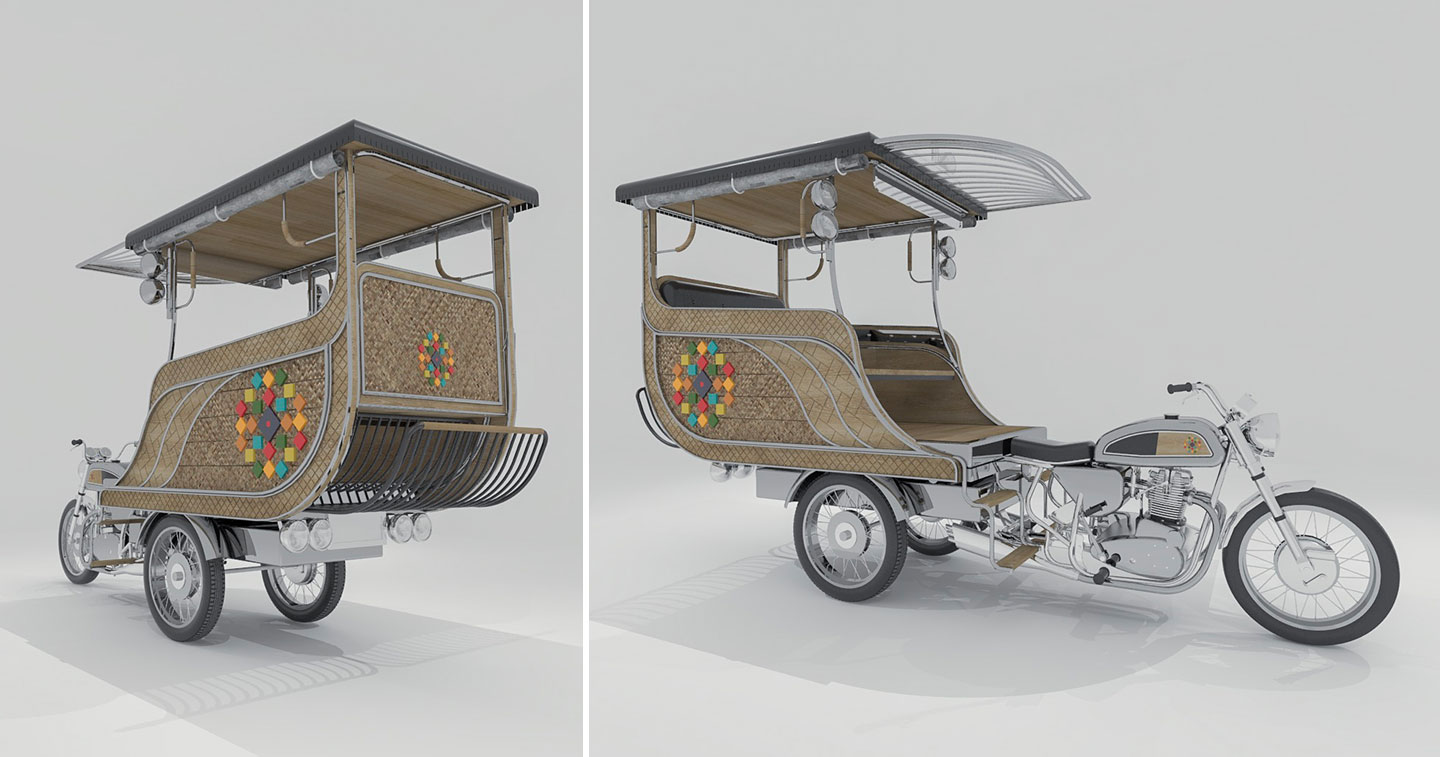

Do you plan on eventually mass marketing?
Eventually, yes, but right now our focus is on adaptability. At present, our target consumers are hotels, resorts, and other institutions, both private and government, because each Siklesa can be customized according to their brand. For example, the Manila Hotel has two vehicles with their logo and tailored to their color palette.
Later this year, we will be launching a fleet in one of the country’s most well-known tourist destinations. Our vision really is for it to be the next iconic step in Philippine transportation from the kalesa to the tricycle and Jeepney, and now the Siklesa.


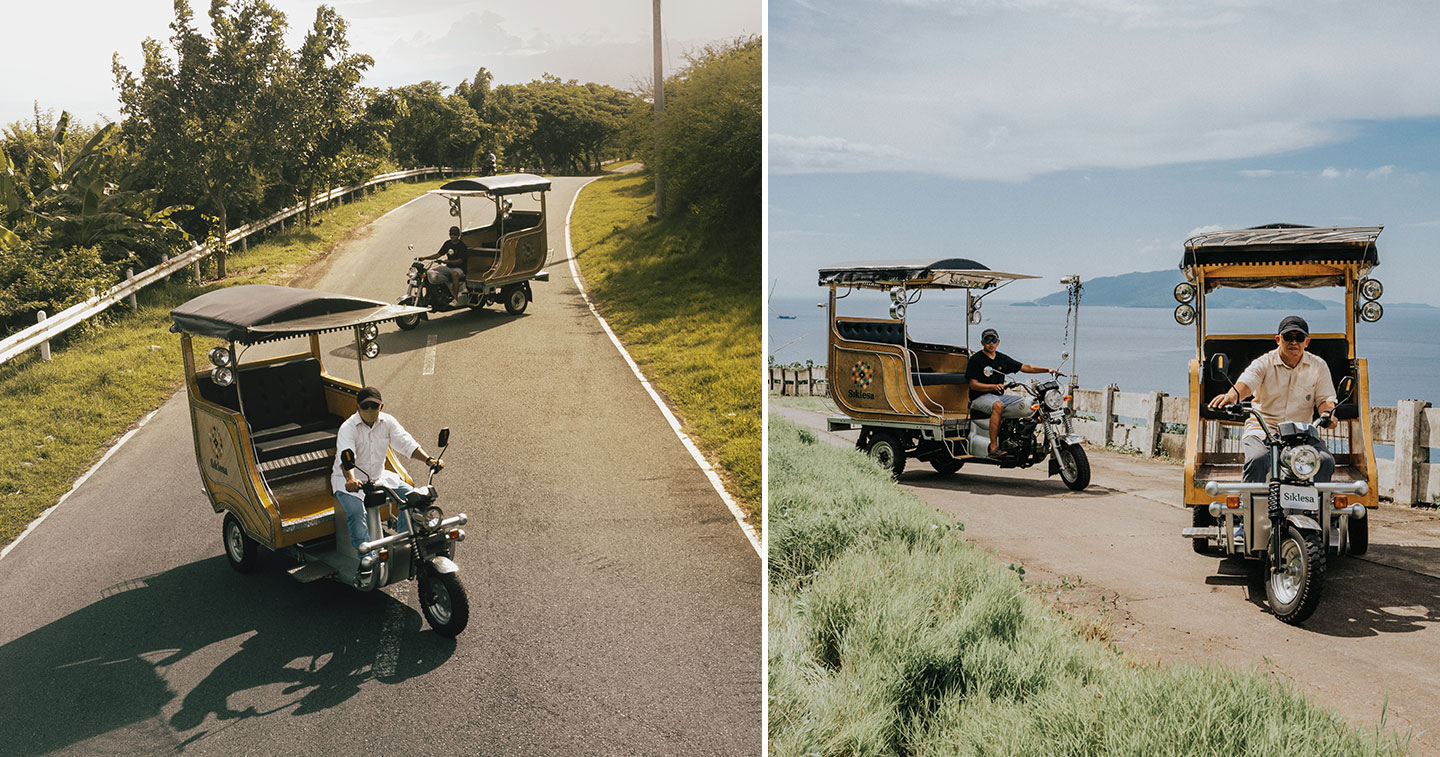
Thank you so much, Lorenzo. To wrap this up, how do you see the Siklesa playing into the cultural goals of the Philippines?
As we said, the Siklesa is a whole new tourism experience. It serves an aesthetic purpose, while also being quite comfortable. We worked really hard on the design to make it a pleasure to ride so for tourism, it’s about the journey being as great as the actual destination.
Quite often, tourists who visit our country have it on their bucket list to ride a jeepney. We hope to add the Siklesa to that list. It’s difficult to list an exact number, but we’d like to manufacture and spread it around enough that we can scale aggressively such that it becomes more affordable, and the local tricycle driver could choose to drive a Siklesa instead.
Imagine a world where you land in the Philippines, and at the airport what greets you are a fleet of Siklesas. Our culture, heritage, and spirit of Philippine innovation condensed into a vehicle that provides a unique riding experience. I am confident in saying that it won’t take long before that image becomes reality.
To learn more about Siklesa, visit its official website or social media pages on Facebook and Instagram.
